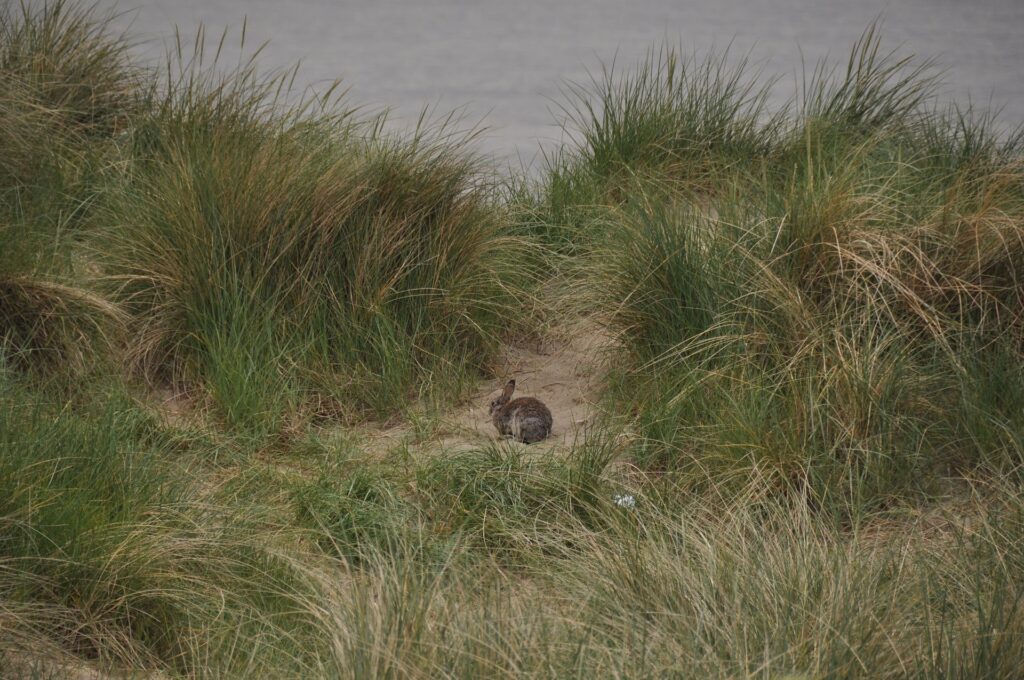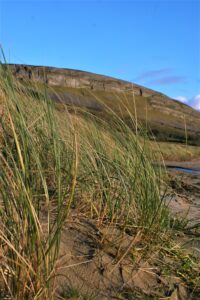Marine Biodiversity
Habitat: Marram Dunes
Species: Marram Grass
Scientific name: Ammophila arenaria
Size: 1m in height
Colour: Glossy green leaves with golden flower spikes
Distribution: Widespread along Ireland’s coast
The dense, green clusters of Marram grass are what many of us picture when we think of coastal sand dunes. Marram grass is well-adapted to the severe conditions of the coastal environment as its rolled-up leaves prevent it from drying out. The leaves can grow up to one metre in height and its green appearance is altered in July and August as it produces tufts of golden flower spikes.
As well as being a recognised feature of sand dunes, marram grass plays a vital role in dune habitats as it helps to reinforce the structural integrity of the dune. The fibrous roots of marram grass bind sand together allowing for more sand to build up and thus creating the dune systems we see at beaches. The binding of the sand ultimately increases the biodiversity of the habitat as it encourages the establishment of other plants in the dune habitat which attracts various insects and animals.
Marram grass was once used to create fishing nets, roofing and even shoes. The importance of Marram grass in the formation of sand dunes has prevented the grass from being harvested in modern times. Environmental groups, including Clean Coasts, carry out marram grass planting in sand dune habitats to help prevent coastal erosion.


